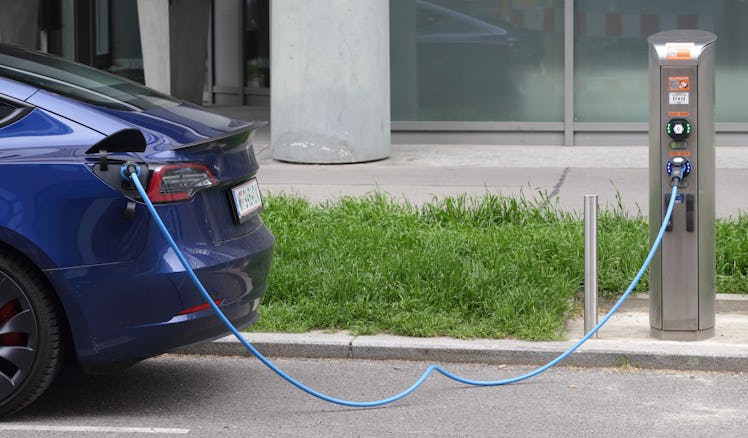This Massive EV Tax Credit Loophole Could Help You Avoid Annoying Red Tape
Only if you're willing to lease your car instead of buy, that is.

New rules surrounding what electric vehicles would qualify for the Biden Administration’s Electric Vehicle Tax Credit went into effect in mid-April of 2023, effectively hobbling many consumers’ abilities to claim the $7,500 credit. However, a workaround exists for people who really, really want an EV that doesn’t qualify for the $7,500 tax credit... if they want to lease, rather than buy.
The 2023 Federal EV Tax Credit, Explained
Intended as a stimulus for the electric vehicle industry to move away from Chinese and other foreign dependence, the federal EV credit, which was included as part of the Inflation Reduction Act, contained a few conditions that are only just now being fully explained.
Namely, the new rules mean that to fully qualify for the tax credit, at least 50% of the components for EV batteries must be sourced in North America, and 40% of the critical minerals necessary for the construction of those batteries, including lithium, nickel, cobalt, and others, must be mined and refined in North America.
The law also stipulates that EVs must have a sticker price of less than $80,000 and that purchasers must not surpass certain income levels to receive the credit. Note that these rules only apply to EVs purchased by individuals, not those purchased by businesses or as fleet vehicles.
What Car Models Qualify For The 2023 Federal EV Tax Credit?
Many EV manufacturers have not been able to meet these requirements yet, so only a handful of existing EVs will be eligible for the full credit. Only 11 models now qualify for the full $7,500 credit:
- Cadillac Lyriq
- Chevrolet Blazer
- Chevrolet Bolt
- Chevrolet Bolt and EUV
- Chevrolet Equinox
- Chevrolet Silverado
- Chrysler Pacifica PHEV
- Ford F-150 Lightning
- Lincoln Aviator Grand Touring
- Tesla Model 3 Performance
- Tesla Model Y (All-Wheel Drive, Long Range All-Wheel Drive, and 2022 Performance)
The 2023 EV Federal Tax Credit Leasing Loophole, Explained
Luckily, for those intent on claiming that credit, or for those who just really want to do their part in reducing fossil fuel dependence, there’s a workaround to what vehicles are eligible.
According to the IRS, any company that leases out an EV is eligible for the full credit. The lessor can then transfer that credit to the lessee through lower payments or better terms on the lease.
In this scenario, car dealerships that lease EVs, even EVS not on the above list, can pass the tax credit on to the consumer as an incentive to lease the vehicle.
For many, leasing a new EV makes sense. Because of the relatively short lease terms, usually two to three years, consumers don’t have to worry about driving obsolete vehicles in the future and don’t need to be as concerned with the deterioration of parts. Plus, a lease allows consumers to drive newer model cars without the expense of purchasing or financing a new car every few years.
However, leasing a vehicle does not allow for an increase in equity in a vehicle, and you cannot sell that car for a profit or trade it in for credit towards a different vehicle when you’re ready to move on. There are also mileage restrictions on leased vehicles and a fee for miles over the limit when the lease ends and the car is returned to the dealership.
Although the EV credit loophole will make every EV on the market cheaper to lease, for some EVs, purchase prices are dropping. Tesla just dropped the price of its SUV, the Model Y, for the second time this year, making it $759 less expensive than the average price of a new car in the U.S. The manufacturer also cut the price of the Model 3, its least expensive model. Back in March, Tesla also cut prices on the Model X and Model S, the brand’s most luxurious models.
Click here for a list of EVs that qualify for the full or partial tax credit.
This article was originally published on